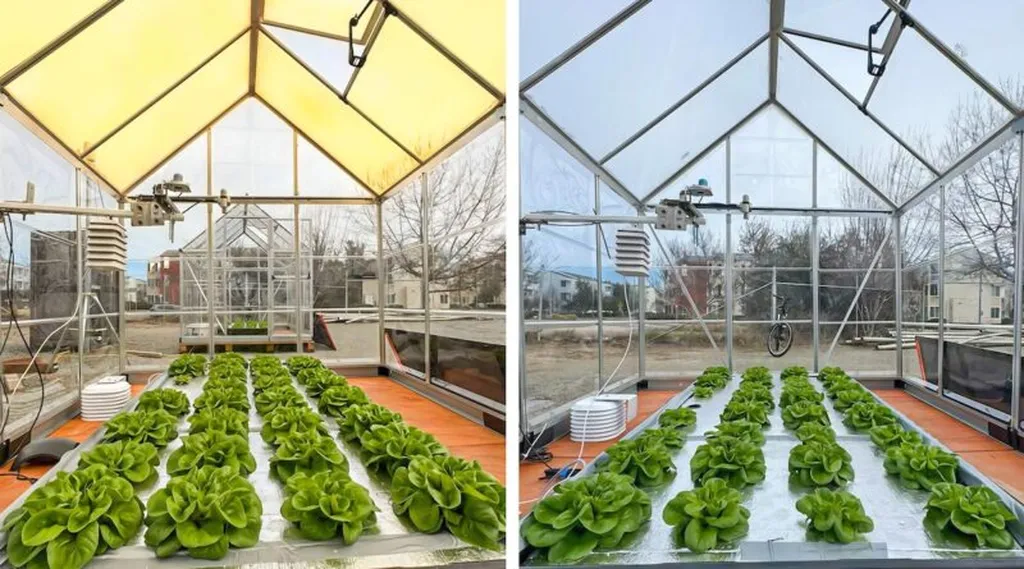In a groundbreaking study published in *Current Plant Biology*, researchers have unveiled a novel approach to enhancing crop productivity by improving light-use efficiency (LUE) in lettuce. Led by Xiaoqian Chen from the National Key Laboratory of Crop Genetic Improvement at Huazhong Agricultural University, the team developed a multimodal phenotyping platform that integrates hyperspectral imaging with 3D reconstruction to provide unprecedented insights into the structural and physiological traits underlying LUE.
The study, which involved 35 different lettuce cultivars, utilized a sophisticated modeling pipeline combining StandardScaler normalization, genetic algorithm feature selection, and artificial neural networks. This approach achieved robust predictions of key physiological parameters such as net photosynthetic rate (A), relative chlorophyll content (SPAD), and aboveground biomass (AGB). The results were impressive, with prediction accuracies of R²=0.72 for A, R²=0.87 for SPAD, and R²=0.85 for AGB.
One of the most intriguing findings was the identification of the 426–430 nm blue band as a critical region for distinguishing high-efficiency cultivars. “High-efficiency cultivars showed distinctive reflectance in this range, consistent with superior photosynthetic performance,” noted Chen. This discovery could revolutionize the way breeders select cultivars with optimal light-use efficiency, potentially leading to significant productivity gains in controlled-environment agriculture.
The study also revealed that high-efficiency cultivars exhibited “large-and-loose” canopies, characterized by greater plant height, projected area, and convex-hull volume, along with reduced compactness. Network analysis further indicated a tighter coupling between spectral and structural traits in high-efficiency groups, suggesting adaptive coordination for light capture and use.
The commercial implications of this research are substantial. By providing a noninvasive, high-throughput system for phenotyping, the study offers a powerful tool for phenomics-driven breeding and management. This could accelerate the development of high-yielding cultivars adapted to controlled-environment agriculture, a sector that is rapidly growing in response to the need for sustainable and efficient food production.
As the agriculture industry continues to evolve, the integration of advanced phenotyping technologies like those described in this study will be crucial. “This research not only identifies actionable phenotypic markers for selecting high-LUE cultivars but also provides a transferable platform for future breeding and management strategies,” Chen added.
The findings from this study are poised to shape the future of crop improvement, offering a blueprint for enhancing productivity through a deeper understanding of the interplay between structural and physiological traits. As the global demand for food continues to rise, such innovations will be essential in meeting the challenges of sustainable agriculture.

